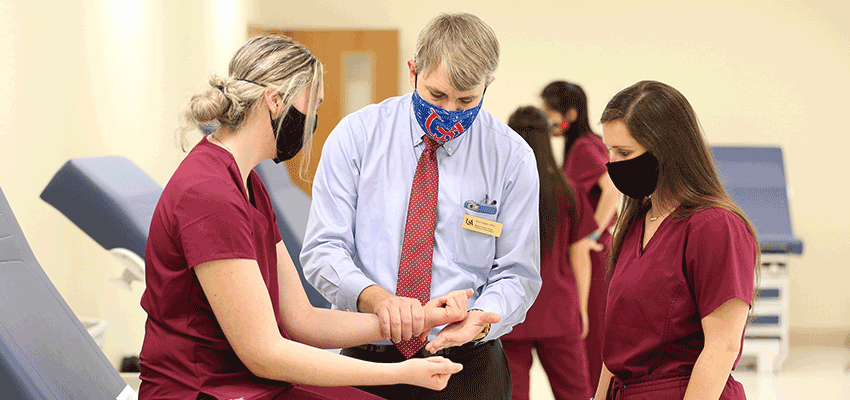What Is a PA?

What is a PA?
What is a Physician Assistant? A physician assistant (PA) is a nationally certified
and state-licensed medical professional who provides healthcare services typically
performed by a physician under the supervision of physicians and surgeons. PAs are
concerned with preventing and treating human illness and injury by providing a broad
range of healthcare as part of a healthcare team. Physician Assistants practice in
a wide variety of specialties and settings.
To perform at this level of responsibility, much of the education of physician assistants
is provided by physicians and highly skilled PAs in order to assure that the patient-care
functions provided by the physician assistant are equivalent in quality to those of
the physician who delegates them.
The Physician Assistant's scope of practice includes but is not limited to:
- Review/take patients’ medical histories
- Conduct physical exams
- Order and interpret diagnostic tests, such as x rays or blood tests
- Make diagnoses concerning a patient’s injury or illness
- Give treatment, such as setting broken bones and immunizing patients
- Educate and counsel patients and their families regarding preventive healthcare, management of health risk behaviors, patient medical issues
- Prescribe medications
- Research the latest treatments to ensure the quality of patient care
- Assist in surgery
- Perform therapeutic procedures such as suturing, removal of minor lesions and casting
Physician Assistants practice medicine in many work settings including:
- Hospitals
- Physician Offices
- Urgent Care Centers
- Rural and urban community health centers
- Nursing homes
- Retail clinics
- Schools and university-based facilities
- Industrial Settings
- Correctional institutions
- The uniformed services and other federal government agencies
Physician Assistants practice medicine in many specialties including:
- Primary Care
- Surgical Subspecialties
- Internal Medicine Subspecialties
- Emergency Medicine
- Pediatric Subspecialties
The American Academy of Physician Assistants state that there are two key differences between a Physician Assistant (PA) and a Nurse Practitioner (NP).
- PAs are educated in general medicine, which offers a comprehensive view of all aspects of medicine. NPs must choose a “population focus,” e.g., pediatric nurse practitioner or women’s health nurse practitioner.
- PAs are trained to practice medicine using a curriculum modeled on medical school education. NPs are trained in the advanced practice of nursing.
PA Occupational Employment and Wages, 2022 (Bureau of Labor Statistics)
The median annual salary for jobs as a physician assistant was $126,010. Employment
of physician assistants is projected to grow 27 percent from 2022 to 2032, much faster
than the average for all occupations. About 12,200 openings for physician assistants
are projected each year, on average, over the decade. Many of those openings are expected
to result from the need to replace workers who transfer to different occupations or
exit the labor force, such as to retire.


